Slicing, biting, slashing, cannibalising … these are not words we would naturally associate with romance. But there is beauty and splendour to be seen in the shadier side of animal mating.
Here we dive into the eight strangest courtships of the animal kingdom.
Stuck on you
Anglerfish

Some male anglerfish attach themselves to passing females, often wasting away into little more than brainless packets of sperm. This is called ‘parabiosis’, where two living organisms join together to develop a shared physiological system. Anglerfish are the only known example of parabiosis in nature.
Anglerfish undergo parabiosis as a response to the vastness of the deep sea, where meetings between the two sexes are rare and infrequent. Males bite into the first female they meet because this represents a safer choice than hedging their bets with another female, who may never come along.
To find out how anglerfish achieve parabiosis, biologist Dr Thomas Boehm and colleagues from the Max Planck Institute of Immunobiology and Epigenetics in Germany examined the DNA of 31 anglerfish specimens from 10 species.
They found that key immune system genes were missing from the anglerfish species in which males and females fuse. Somehow, they have compromised their immune systems to allow for parabiosis, without suffering ill effects.
Understanding how anglerfish manage this trick could have significance for medicine, increasing the ease with which transfusions and organ transplantations can take place in future.
Why did it have to be snakes?
Red-sided garter snake
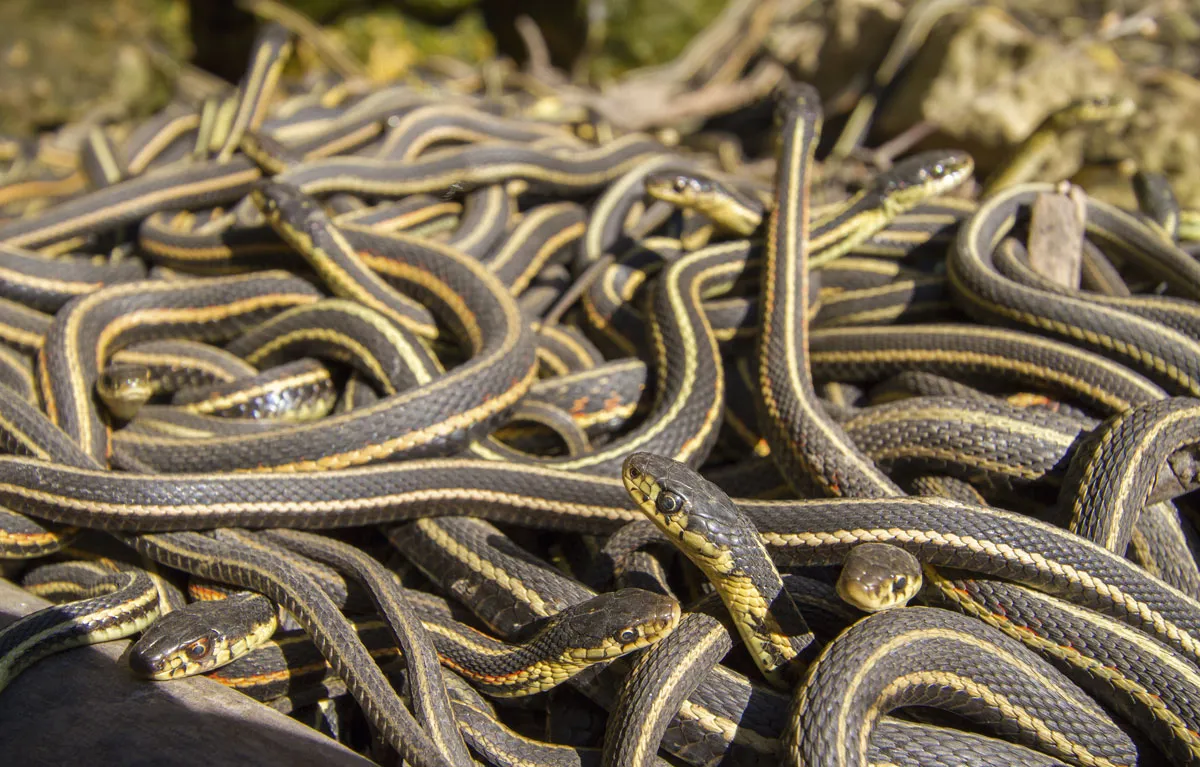
Snakes have two penises rather than just the one. Known as hemipenes, these organs allow male snakes to copulate with females from a variety of directions. This is especially helpful to red-sided garter snakes who, during mating time, form chaotic ‘mating balls’ in which males can outnumber females by 100-to-1.
This situation occurs because the male snakes wake from their winter sleep before females, which temporarily unbalances the sex ratio.
To increase the odds of mating success, hemipenes in many reptile species have evolved complex spines that lock into place during copulation. In red-sided garter snakes, the hemipenes have a large spine that inserts into the female during mating.
As impressive as hemipenes are, they are only half the story. By anaesthetising the reproductive tracts of female red-sided garter snakes, a team of zoologists discovered in 2014 that the anaesthetised females spent longer copulating than ones who were not anaesthetised.
The finding suggests that, by contracting her genital opening and vagina, a female may be able to forcefully rebuff male advances, disrupting an unworthy partner’s chances of success.
Read more:
- Endangered male quolls are choosing sex over sleep – and it may be killing them
- How the battle of the sexes left the duck with an awkwardly long, corkscrew-shaped penis
Can’t get you out of my head
Sea slug

Earlier this year, scientists discovered a species of sea slug (Siphopteron makisig) that, in the throes of love, stabs its partner directly in the centre of its head with a venomous spur.
Called the penile stylet, this spur (which is attached to the penis) injects a complex cocktail of hormones directly into its lover’s brain, improving its odds of mating success.
This is just one of many reproductive oddities to have evolved in sea slugs. Before transferring sperm, some sea slugs ‘kiss’ by grasping one another mouth-on-mouth. Sea slugs can also ‘cuddle’ after mating, coiling their colourful bodies around one another.
“It’s likely that ‘cuddling’ may be more akin to mate guarding,” says Cheyenne Tait, a seasoned sea slug observer at the University of Massachusetts Amherst.
“The threat to their reproductive success is that their sperm is digested by their partner before it can be used for fertilisation. And so ‘cuddling’ allows sperm a chance to migrate deeper within the partner’s reproductive tract.”
Most people consider sea slugs, like many invertebrates, to be primitive inferiors of big-brained, bony animals. Their rich, duplicitous sex lives suggest otherwise.
Bite me
Redback spider
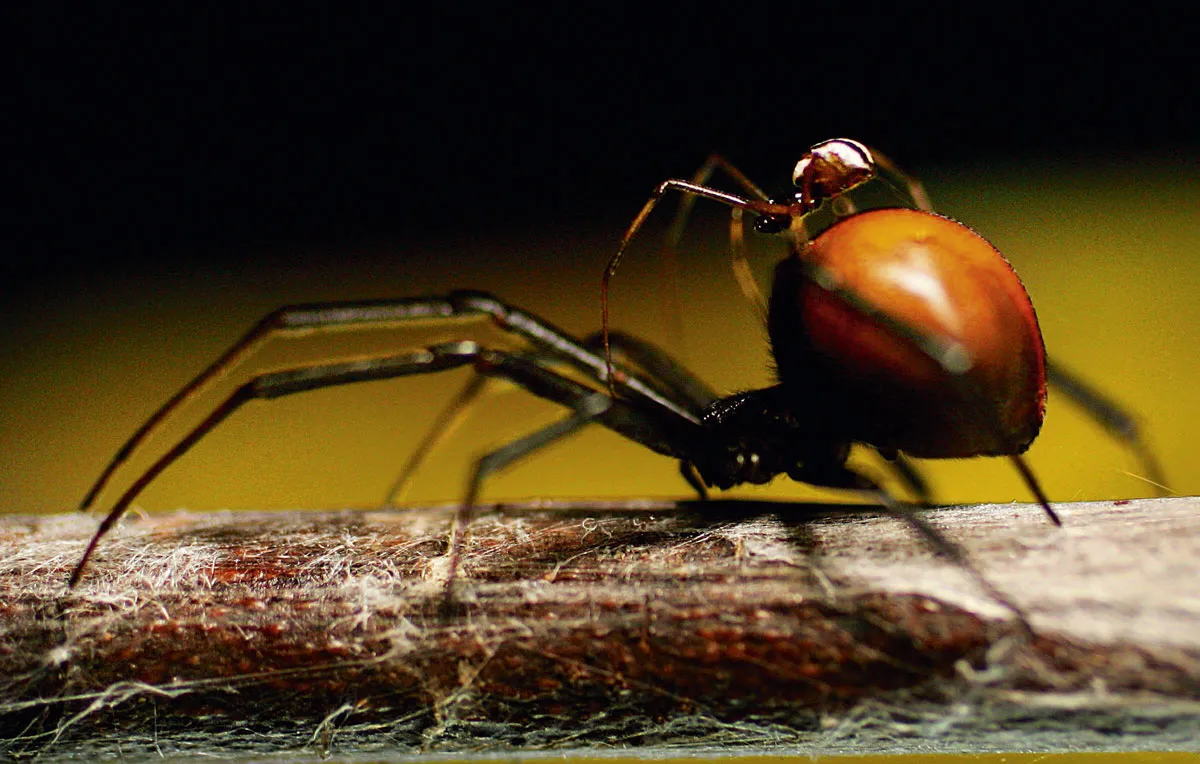
For male spiders, it’s complicated. To prepare for sex, he first needs to ejaculate onto a tiny web and then collect his semen in a pair of syringe-like appendages near the mouth known as palps.
Locked and loaded, the male spider must then approach a female, being careful not to activate her predatory kill reflex, and plug the palps into the female’s reproductive passages, which happen to be mere millimetres from her venom-laden fangs.
To limit the chances of being eaten, male spiders have evolved complex dances to communicate their sexual intentions clearly.
Others offer gifts to the female, to keep her entertained while the transfer of sperm takes place. But male redback spiders go one step further: while mating, the male balletically somersaults into the female’s jaws, encouraging her to take a bite.
This self-sacrifice offers two bonuses to males. The first is that the longer she takes to snack, the more eggs his sperm can fertilise.
The second is that females which have just eaten a male appear more likely to reject the next male that comes along.
Cupid’s arrow
Garden snails
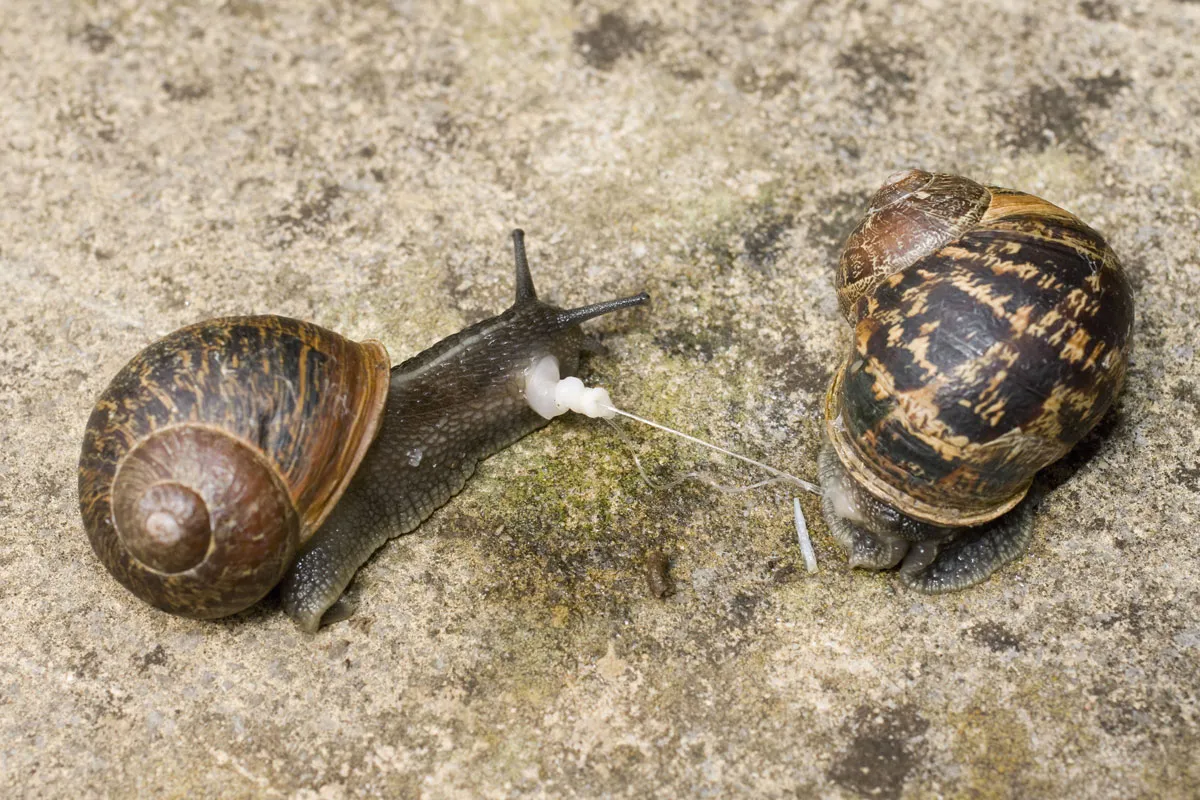
During their courtship, some species of snail regularly fire chemical-tipped arrows at one another, just like the garden snails pictured here.
And because snails have both female and male reproductive parts, these arrows (or ‘love darts’) often fly both ways.
“The aim of love darts is not to kill the mating partner, but to introduce bioactive substances that influence the reproductive processes of the mating partner,” says Dr Joris M Koene, an expert in snails based at the Amsterdam Institute for Life and Environment.
The substances found on love darts include a rich cocktail of special compounds (known as allomones) that stop sperm from wasting away in the reproductive tract of a potential mating partner, should mating occur.
Each snail species has its own unique shape of dart. Some love darts are curved like harpoons. Some are barbed. Some even have diamond-shaped tips, like ornate spears.
Do they ever misfire and cause death? “I have seen an occasional dart shooting that resulted in the dart going straight through the head of the recipient, but even in those cases the recipient survived,” Koene says.
Read more:
- Do any other animals have sex for pleasure?
- The tiny mites that have sex on your face are close to extinction – and that'll be bad news for your skin
It's not cricket
Sagebrush cricket
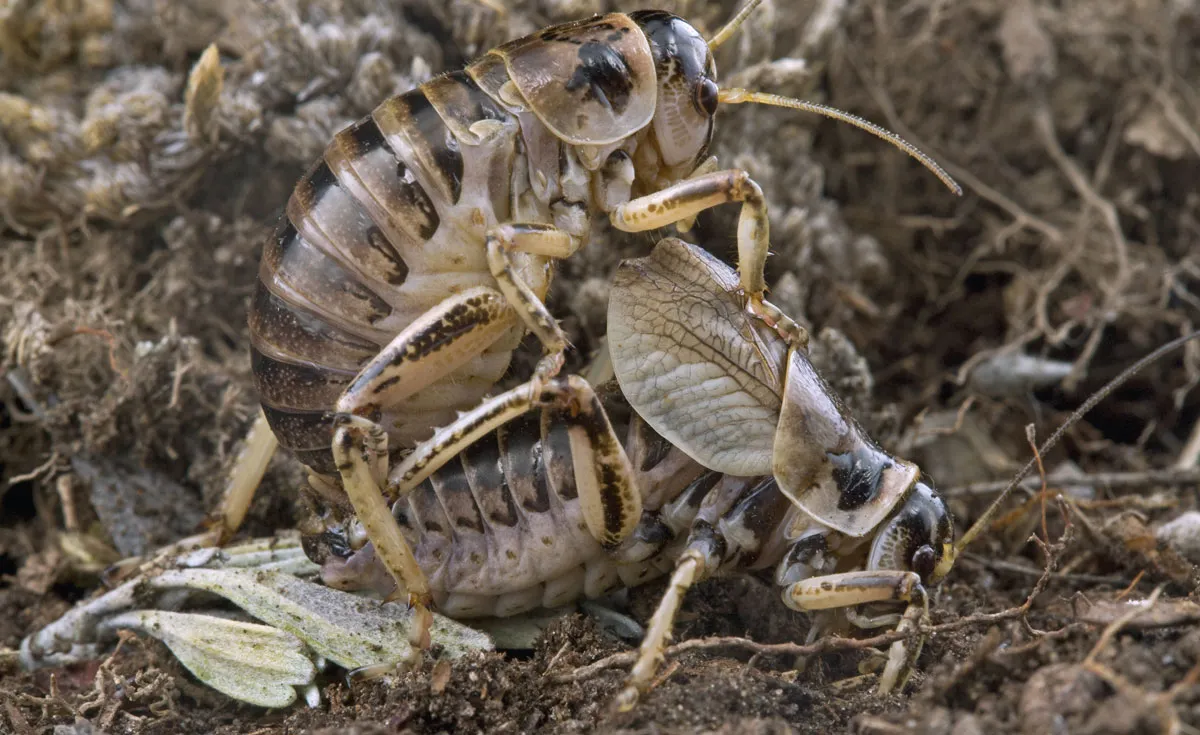
For sagebrush crickets, sex is all about give and take. The male (right) takes his time during mating, ensuring that as much of his sperm can be transferred as possible.
But he must give something of himself to do so: his wings.
Not only does the female sagebrush cricket devour the male’s wings during mating, she also drinks the blood-like fluid that leaks from his wounds.
Her hunger is such that male body weight can fall by 10 per cent during this arrangement.
And yet the male has more gifts up his sleeve. His sperm are wrapped up in a gooey casing which the female can, if she requires, snack upon.
The curious mating habits of sagebrush crickets are one of many spectacular arrangements that have evolved between the sexes.
Together, these tactics and strategies are helping zoologists explore the economics of sexual reproduction in animals, occasionally reframing our understanding
of how evolution works.
Pleased to eat you
Praying mantis
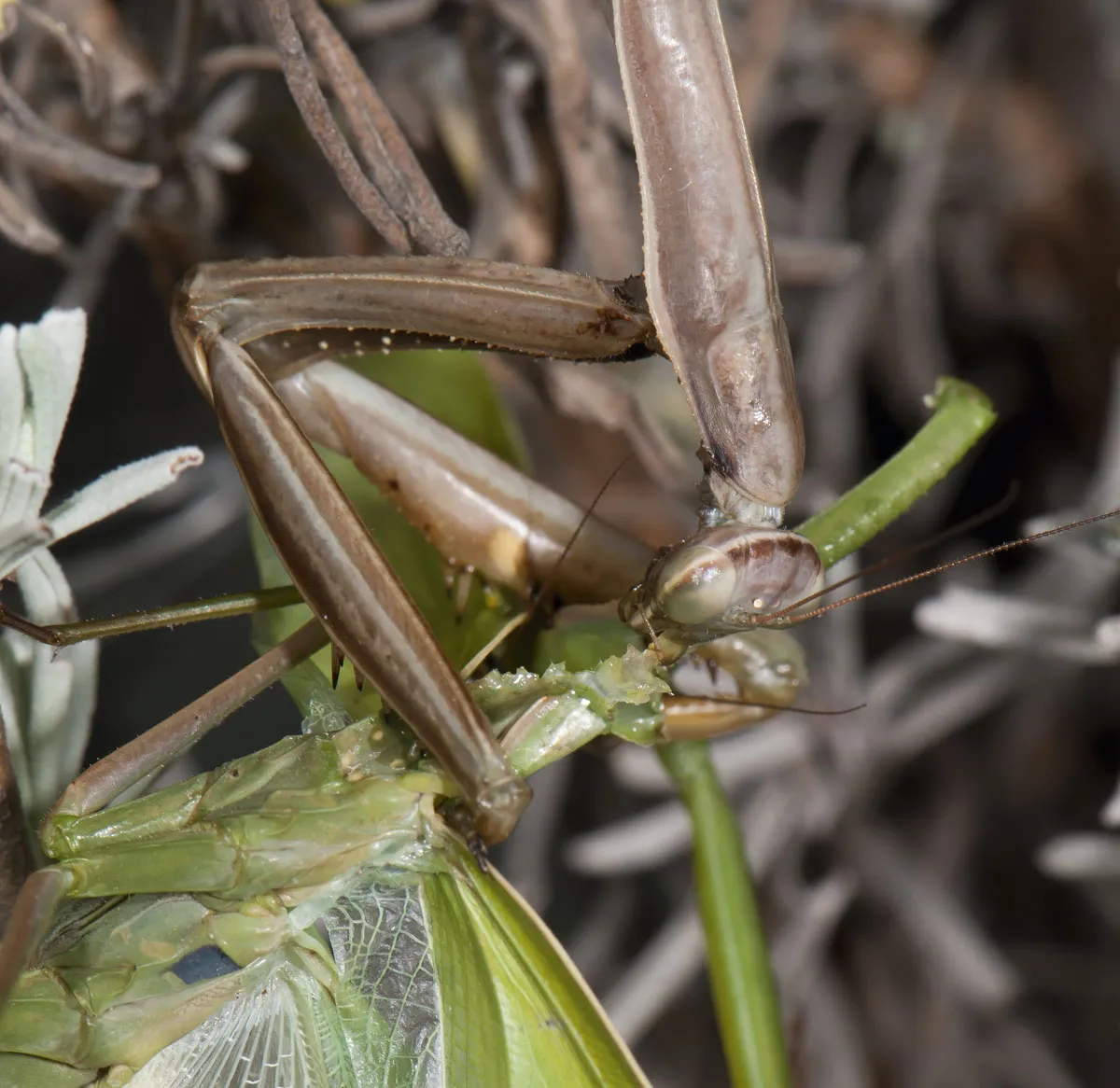
“Cannibalism has its benefits,” says Nathan Burke, a postdoctoral research fellow at the University of Hamburg, who studies mantis mating strategies.
“It can lead to improved growth, condition and reproduction for the cannibal. What separates many mantises and spiders from other cannibalistic animals is that they also cannibalise in a mating context, and typically it’s only the female that eats the male.”
Burke is especially interested in the wrestling matches that some mantis species go through before mating, which involve intense grappling and violent tussles between males and females, using their raking forelegs.
Should a female win these struggles, the male almost certainly ends up eaten. But if a male wins, he stands a good chance of mating.
Quite why sexual cannibalism is so rare among insects remains a subject of debate.
“The thing about mantises is that they’re mostly sit-and-wait predators. Rather than move around looking for food, they wait patiently for their food to come to them,” says Burke.
“It’s possible that this sit-and-wait lifestyle is a pre-adaptation for sexual cannibalism.”
This may explain why cannibalism occurs in other sit-and-wait predators, such as spiders.
Prickly penis
Seed beetle

Laced with hundreds of sharp spines whose purpose is to scratch and tear the female’s genital tract, the penis of the seed beetle makes no sense at all.
After all, how could genes for a penis that injures the female’s reproductive tract spread throughout a population?
For male seed beetles, the perks of a prickly penis are clear: males with longer spines tend to produce more offspring, partly because the wounds the male inflicts act as an entry point for a cocktail of nutrient-rich chemicals he produces during sex.
But in genetic terms, females can also benefit. In 2021, Swedish scientists bred two lines of male seed beetles, one with long spines and the other with short. They then watched what happened to the females that bred with each sub-group.
The female seed beetles that mated with the males with long-spined penises, had sons with the same long spines. But their daughters also appeared to inherit some valuable traits.
On average, they had larger bodies and laid more eggs in their lifetime.
About our experts
Dr Joris M Koeneis an associate professor at the Amsterdam Institute for Life and Environment. His research centres on reproduction in simultaneous hermaphrodites. His studies have been published in several peer-reviewed journals, such as PLoS ONE and Current Biology.
Dr Nathan Burkeis an evolutionary ecologist and Alexander von Humboldt Postdoctoral Research Fellow at the University of Hamburg, Germany. His research investigates sexual antagonism in the Springbok mantis (Miomantis caffra).
Dr Cheyenne Taitis a Postdoctoral research associate at the University of Massachusetts Amherst. She completed her PhD at the University of Notre Dame in 2019.
Read more: